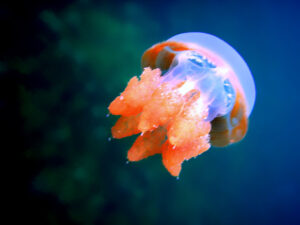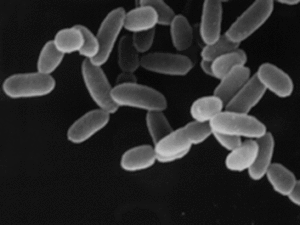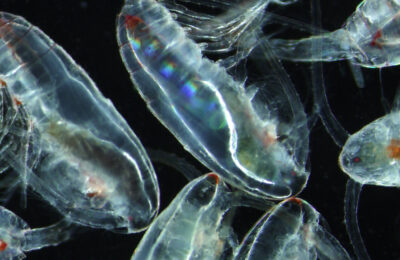Journal source: Sunagawa, S., Acinas, S.G., Bork, P. et al. Tara Oceans: towards global ocean ecosystems biology. Nat Rev Microbiol 18, 428–445 (2020). https://doi.org/10.1038/s41579-020-0364-5
The diversity that surrounds us
The world’s oceans overflow with an immense array of life, from majestic whales, sharks, and dolphins, to amazingly fast and beautiful schools of glistening fish that scatter the sun’s rays throughout the water column. While views of these charismatic animals no doubt fill us with awe and inspire many to protect marine life, the ocean is also home to a diverse community of microscopic organisms. From viruses, single-celled archaea, and bacteria, to algae and tiny swimming zooplankton, many of which resemble shrimp and crabs, these tiny organisms form the cornerstone of oceanic food webs.
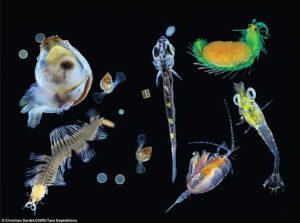
This community of single-celled microorganisms, phytoplankton, and zooplankton, collectively called the plankton, is not easy to observe if you collect a bucket-full of ocean water and gaze into it without the aid of a microscope. Despite their tiny nature, these critters perform many functions, including primary production and nutrient cycling, which keep our oceans functioning by providing sustenance to organisms higher up in the food chain. Primary production is performed by algae, which fix light energy into nutritious sugars for organisms higher up the food chain. Nutrient cycling by bacteria and other microbes frees nitrogen and phosphorus, elements necessary for organism growth, from dead materials so that they can reenter the food web.
While marine scientists have long recognized the importance of the ocean’s plankton communities, a question that keeps many up at night is how many different species of microbes and zooplankton are living in the oceans. Although much of the life in the ocean has already been described, scientists reckon that we have barely scratched the surface in terms of identifying the full diversity of ocean life contained within the plankton. Knowing the diversity of the species that comprise the plankton, and how that diversity changes across different regions of the ocean is valuable as scientists work towards a more holistic understanding of how energy flows from microbes to higher up the food chain.
Additionally, global sampling of the ocean’s planktonic diversity across major ocean regions – the poles, temperate, and tropical zones – also has the potential to shed light on how environmental factors such as temperature impact plankton biodiversity. Furthermore, investigating how diversity changes across major geographic regions may shed light on the role of diversity in supporting primary production, as scientists in freshwater and terrestrial ecosystems often find that more diverse communities tend to be more productive.
The study
With the ambitious goal of characterizing the global ocean’s plankton diversity, a team of scientists initiated a long-term oceanic expedition called the TARA Ocean Project aboard a schooner named TARA. Imagine stepping aboard a sailboat, but one that is decked out in high-tech sampling gear, laboratory space, and more. The researchers set sail in 2009, collecting 35,000 water plankton samples from over 200 sites spanning from the Arctic Ocean to the Southern Ocean.
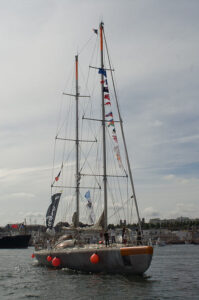
All organisms contain DNA, which is known as the blueprint of life, as it codes for each species’ unique characteristics and functions. RNA, like DNA, is another code of life, and it can tell scientists which species and what genes are active in different communities. Together, DNA and RNA can tell a story of what these planktonic communities look like, and what they are doing. To identify the different types of plankton present in the samples, the researchers measured the abundance and different types of DNA and RNA from the water. After sequencing thousands of segments of DNA and RNA, the scientists looked at how the composition and abundance of DNA and RNA changed across samples. This allowed them to examine plankton species diversity as well as the active genes present in different regions.
What did they find?
With over a trillion sequences of DNA, the scientists assembled a picture of the global oceanic plankton community. Planktonic diversity was highest in samples collected in tropical regions and decreased toward the North and South Poles. This decreasing trend in biodiversity from the equator to the poles is known as the latitudinal biodiversity gradient and is well-documented for land plants and animals.
In addition to describing plankton diversity patterns, Sunagawa and colleagues also discovered differences in how organisms in arctic, temperate, and tropical waters may adjust to climate change. Their analysis of active genes in these regions indicated that planktonic communities in the Arctic Ocean are more sensitive to changes in environmental conditions, while communities in temperate and tropical waters appeared to have more flexibility in adapting to changing environmental conditions.
The TARA Oceans expedition also revealed a diverse and abundant virus community. Oceanic viruses are often important predators of bacterial and eukaryotic microbes, and the TARA researchers found that the role of viruses in the ocean may be more complex than originally thought.
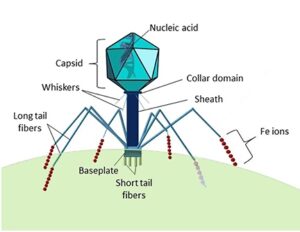
First, they found that the diversity of viruses increased from the South Pole to the equator, and then diversity dipped a bit, and then reached the highest levels in Arctic waters. Furthermore, the scientists found evidence for viruses to play a role in carbon cycling, which is a process important for maintaining a stable climate and in energy transfer for organisms. This is an exciting finding, as carbon cycling was previously thought to be the job of protists, a group that contains algae and amoeba-like microbes. From these results, the researchers emphasize the need for intensive studies on the global virus community and its functions in marine food webs.
The bigger picture
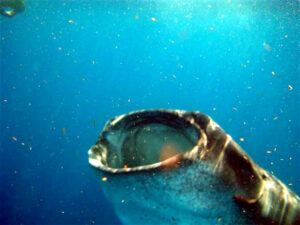
You may have heard the adage, “it’s the small things in life that count.” The TARA Oceans expedition is dedicated to unraveling the unprecedented biodiversity within the largely invisible oceanic plankton communities. By generating a robust global inventory of plankton diversity, the TARA Oceans team has expanded knowledge of ocean biology and established a baseline of understanding just how complex and dynamic these tiny but mighty critters are. Even with such an extensive dataset, the authors emphasize that much of the plankton diversity has yet to be described.
Kate received her Ph.D. in Aquatic Ecology from the University of Notre Dame and she holds a Masters in Environmental Science & Biology from SUNY Brockport. She currently teaches at a small college in Indiana and is starting out her neophyte research career in aquatic community monitoring. Outside of lab and fieldwork, she enjoys running and kickboxing.


